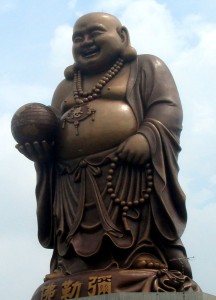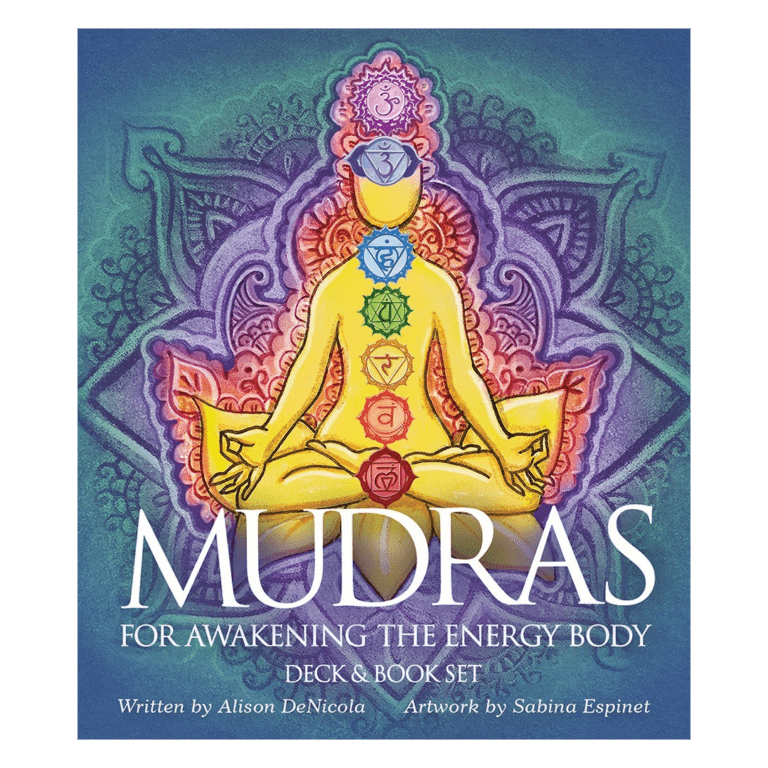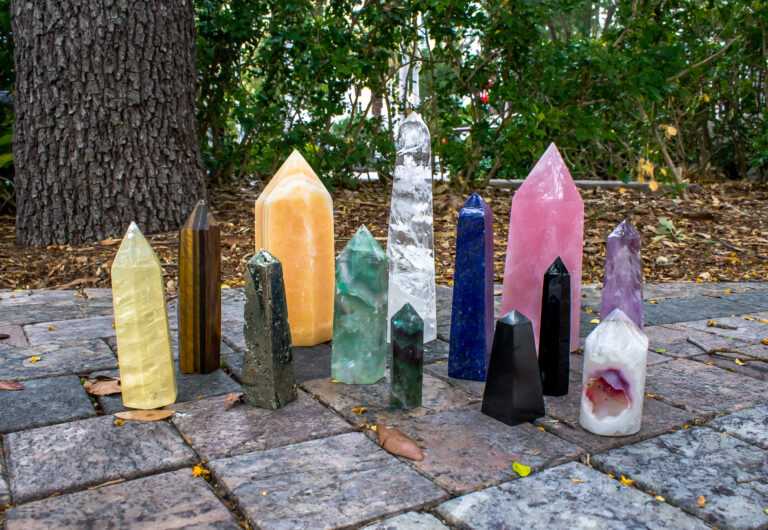HAPPY BUDDHA / HOTEI
The enlightened mystic most associated with laughter is “THE HAPPY BUDDHA/HOTEI”, also known as the laughing Buddha. Happy Buddha / Hotei was a large man with a big belly who traveled from village to village in sixteenth-century Japan. He had no desire to call himself a Zen master or to gather disciples. Instead he walked the streets carrying a sack full of candy, fruit, and doughnuts, which he gave to all the children who gathered around him. And he laughed—a lot!

At first people would gather around him because they thought he was mad to laugh so much. But Hotei’s laughter was so contagious that soon they all found themselves doubled over with laughter, and they forgot all their judgments. Even when they asked him questions about enlightenment, Hotei would just laugh. Soon they forgot their questions, the laughter was so infectious. The people started to wait for Hotei. After laughing with such totality, they found that all their senses had sharpened. Their whole being had become lighter, as if a great burden had been lifted. With Hotei they laughed for no reason at all. And yet everyone was nourished and cleansed by the laughter and felt a deep sense of well-being. Something from the unknowable depth started ringing bells in people ’s hearts.
He was not a philosopher. He was a very simple being, silent, happy, alive, living moment to moment.
It is said that Happy Buddha Hotei even laughed in his sleep, that his whole body would shake as the laughter rumbled up from his belly. Happy Buddha Hotei was very stout and strong because he laughed so much. Laughter was so natural to him that anything and everything helped him to laugh. This was his way of teaching enlightenment. And as they shared the laughter with him, people felt that they were in the presence of a master, that something of tremendous significance was transpiring. So he came to be known as the laughing Buddha. He was a different type of master from the Buddha, but he was a Buddha nonetheless. He offered another way, through laughter. He was his own message. His life was his teaching. He didn’t laugh at jokes or at others. He laughed at himself. He laughed in celebration of existence, out of joy of life. And he was tremendously compassionate. He wanted to share his gift with as many people as possible. He wanted to see people’s faces light up with laughter, see their beings become radiantly happy at the sheer joy of being alive.
Happy Buddha/Hotei had no philosophy, scriptures, dogmas, theories, ideologies, or concepts to preach. His teaching was existential. He wanted everyone to experience the joy that laughter brings. This kind of meditation is not something that can be talked about. It must be experienced. Happy Buddha/Hotei was doing a tremendous service to humanity.
One day Happy Buddha/Hotei was passing through a village. He sat down under a tree, with his eyes closed, not laughing, not even smiling, completely calm and peaceful. A villager asked him: “You are not laughing, Hotei?”
He opened his eyes and said, “I am preparing.” The villager did not understand. He said, “What do you mean by preparing?” Hotei replied: “I have to prepare myself for laughter. I have to rest. I have to go within. I have to forget the whole world so that I can recharge, and then I can be filled with laughter again.” If you really want to laugh totally you must also spend time sitting in silence. If you really want to laugh, you must learn about the relationship between laughter and tears. The more you laugh, the more you can cry, and vice-versa. Have you ever experienced that sometimes you laugh so hard the tears come and that sometimes, when you are crying, laughter suddenly appears? These two energies are deeply connected, and out of these polarities you find your balance. Your inner silence goes even deeper. Then life is a dance. You can laugh, you can cry, you can be silent, you can be ecstatic, you can be still.
Find Your Inner Happy Buddha/Hotei
How do we intentionally bring ourselves to laughter? Jokes are a great place to start. They are never logical. They bring us into the present moment. We forget our seriousness, our problems, and for a moment we are innocent children again, full of wonder and awe.
The reason we laugh at jokes is that they take sudden twists and turns. When you start to hear a joke your mind is functioning logically. You expect logical things to happen, and then something comes along that you could not have imagined. It is illogical, ridiculous, absurd. The shock . . . and then you explode into laughter.
A certain kind of tension has been released. The purpose of the joke is not the joke itself—it is the laughter that follows. When you laugh you are no longer in your head.
And after the laughter, you drop into a profound silence. Do this with a friend(s).
FOUR-MINUTE MEDITATION: Sit under a Tree
BENEFITS
Something as simple as this four-minute technique can be wonderfully effective at helping you to feel more rooted in yourself, more grounded, and at the same time more open, receptive, and relaxed. As you regenerate your energy, you will find your natural, spontaneous laughter welling back up to the surface.
If you want to get grounded, there’s no better way to do it than by sitting under a tree with your eyes closed. Try it. Feel the breeze as it passes through the tree, rustling the leaves and branches. The wind touches you, moves around you, and passes by you. Now allow it to move within you and pass through you. With your eyes closed, feel that you are also like a tree, open, with the wind blowing through you—not passing by your side but right through you. If you can’t find a tree, sit on the ground in your backyard, in the park, or on the beach. A place outdoors is best. If, however, you are reading this in freezing sub-zero temperatures or in sweltering heat, just sit on the floor indoors. Imagine the tree. It works just as well.
FOUR MINUTE MEDITATION: Laughter
BENEFITS:
The structure of this technique helps keep the balance between the extroverted nature of stage one and the introverted nature of stage two. It is the balanced awareness and expression of both of these energies that brings you to a deeper harmony and peace within yourself.
Stage One: start laughing and laugh for no reason.
Stage two: sit in silence and watch with non-judgment.
You can do this for any amount of time that you choose, just do the same for each stage. Start with two minutes of each stage, longer if you like.
Source: Pragito Dove is author of Laughter, Tears, Silence: Expressive Meditations to Calm Your Mind and Open Your Heart(2010), a meditation master, keynote speaker, and trainer. Visit Pragito’s website at http://www.discovermeditation.com






